At 4pm every evening, traffic police officer Krishna Murari Dubey and his team of three head constables arrive at an approximately 300-metre stretch of an arterial road in Noida. They have an hour’s window to decongest the road from unauthorised street vendors before it becomes chock-a-block with cars coming from Delhi and local shoppers. It’s the famous Atta Market, once Noida’s pride, on the Captain Vijyant Thapar Marg that’s the cause of Dubey and his team’s headache.
“As soon as we move away from the main market, the hawkers return with their makeshift stalls,” Dubey told ThePrint.
But things were very different 25 years ago. Once hailed as the “Connaught Place of Noida,” Atta Market was envisioned as a premier commercial hub of the satellite town that’s currently celebrating its 50 years. Today, the market—with over 700 shops—is a pale shadow of its past, bearing more resemblance to a chaotic and smaller version of Sarojini Nagar. Encroachments by hawkers who occupy both the footpaths and portions of the road have severely impacted business for shopkeepers who’ve operated here for over three decades. Overcrowding, traffic gridlock, no parking space, and hazardous electrical wiring — all contributing to its current state of disarray. At the heart of this chaos, many blame, is the Gujjar dominance. They extract huge rents from street vendors who cause jam. As for vendors, they demand a dedicated space to do business.
“Police, Gujjar landlords, and even the government — no one is willing to do anything,” said Ali Hassan, who has been running a makeshift footwear stall under sector 18 metro station since 2002.
“Our safety is all in God’s hands now,” he added.
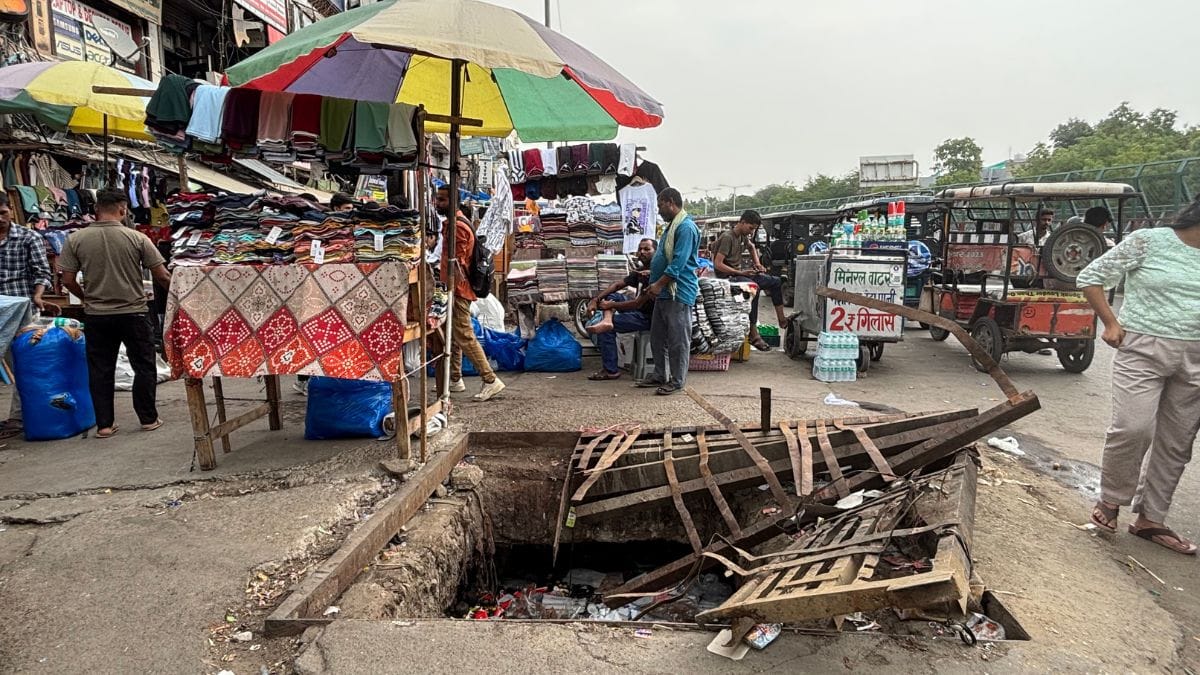
Also read: Noida’s Sports City is the biggest scam in its 50-year history. CBI probe to court cases
A shadow of its past
When CB Jha moved from Punjab to Noida in 1982 as a homeopathic doctor, Atta Market was little more than a quiet, underdeveloped patch with a scattering of shops. Over the decades, he has witnessed its transformation — from its early struggles to its golden years, and now, its slow and painful decline. Jha is the president of the Atta Market Traders Welfare Association.
“It was deserted back then. There were no facilities, and no one came here after sunset — it was all jungle,” Jha recalled. “It wasn’t until 1995, when we organized a Diwali event — lit up the market, offered discounts, and gave away hampers — that people started noticing us.”
That marked the beginning of its rise, and as development followed, so did the crowds. He recalled a time when Atta was a destination for wedding shoppers who now head to Chandni Chowk.
“Name any brand from back then — it was available here. During festivals and wedding season, people would come all the way from Delhi and Ghaziabad to shop at Atta. At times, they couldn’t meet the demand,” said the 80-year-old.
Today, the scene is starkly different. Many shopkeepers have either shut their businesses or are barely keeping them afloat. What was once a vibrant commercial hub is now reduced to a bargain market, where a majority crowd comes looking for cheap street stuff—cloths, goggles, artificial jewellery, watches, mobile repair shops etc.
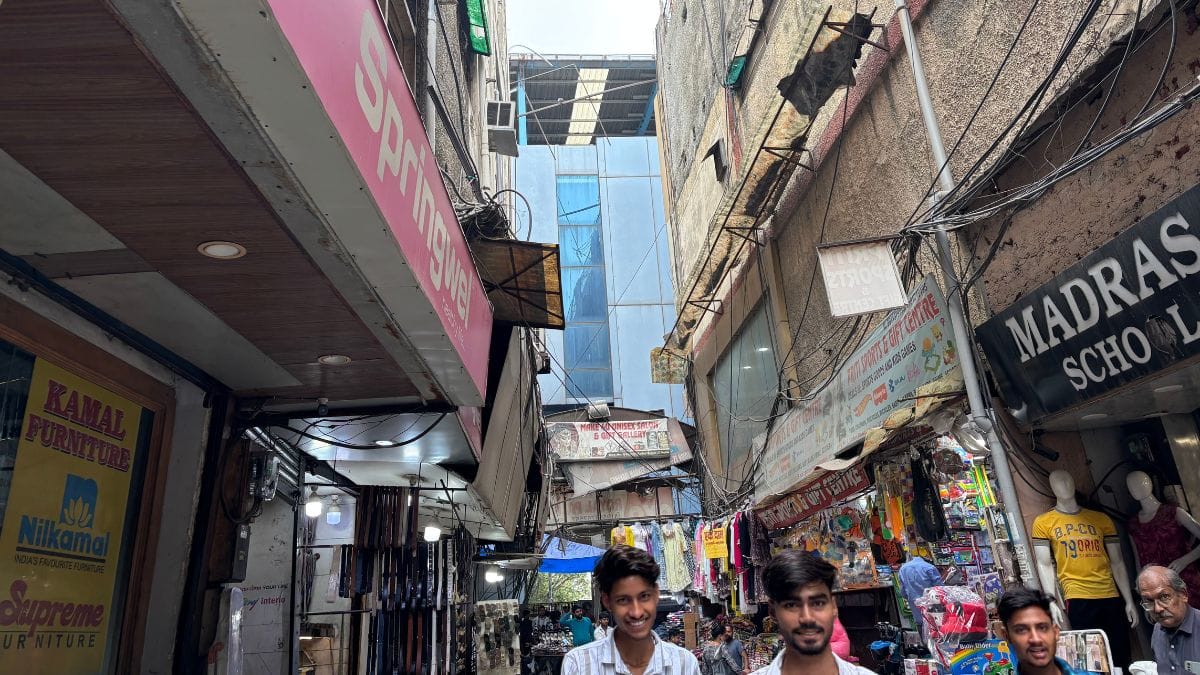
According to Jha, the turning point came with the arrival of the Delhi metro line in 2009.
The Metro authorities, he said, had planned to demolish the marketplace — a threat Atta narrowly averted through negotiations.
“But while we managed to win that battle with the metro, the Noida administration has continued to treat us like stepchildren,” Jha said, referring to the alleged apathy shown toward Atta. “They spent crores to develop Sector 18 market area, including the malls, not a rupee was allocated to improve Atta by the government”
Today, at least 16 potholes lie open and unattended in and around the market, which according to the president, are a “symbol of neglect.”
Kamal Saluja, who has been running a furniture store in Atta for 40 years, said “the market has been reduced to ruins.”
In the first two to three decades of his business, Saluja regularly clocked monthly sales of Rs two lakh. Now, there are days he barely meets a customer.
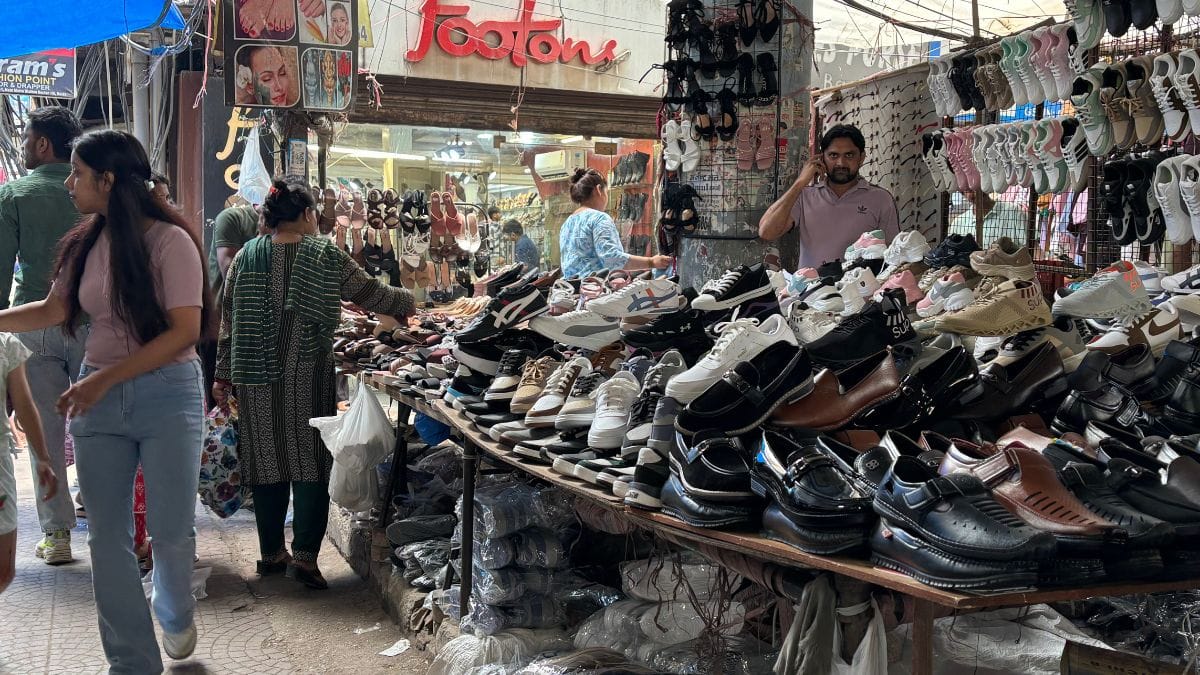
“These makeshift stalls have destroyed our business. Our core buyers used to be high-end customers — they’ve all moved to the malls,” he said.
Saluja and many others like him feel trapped. They can’t afford the skyrocketing rents elsewhere even as business at Atta continues to dwindle.
“We’re running our shops from our own pockets now.”
Also read: Noida’s best-kept secret—its Mughal, Maratha, Bhagat Singh history
‘Terror of landlords’
The land on which Atta Market stands belongs to the Gujjar community from Atta village, situated just behind the main marketplace. The community has lived there for decades.
When Saluja opened his shop in Atta Market 40 years ago, his bond with his Gujjar landlord was almost like family. Rent hikes were minimal, sweets were exchanged during festivals, and the landlords would often spend hours chatting with the shopkeepers. However, over the years, as a new generation took charge, ties have grown strained.
“Today, the shopkeepers are terrified of the landlords,” Saluja said, recalling the horrific 2014 incident that took place just a few kilometres away from his shop.
A 35-year-old furniture trader Naveen Ahuja was allegedly shot dead by his landlord Shibu Awana inside his shop in the Atta market. The two reportedly had a long-standing dispute over payment of rent.
According to Saluja, the new generation of landlords don’t carry the warmth and goodwill of their fathers.
“Their focus is to get money. And right now the biggest source is hawkers so all their focus is towards them,” he said.
Kumar alleged that the landlords not only charge rent from the shops but also from the hawkers who run their stalls on the sidewalk, which is public property.
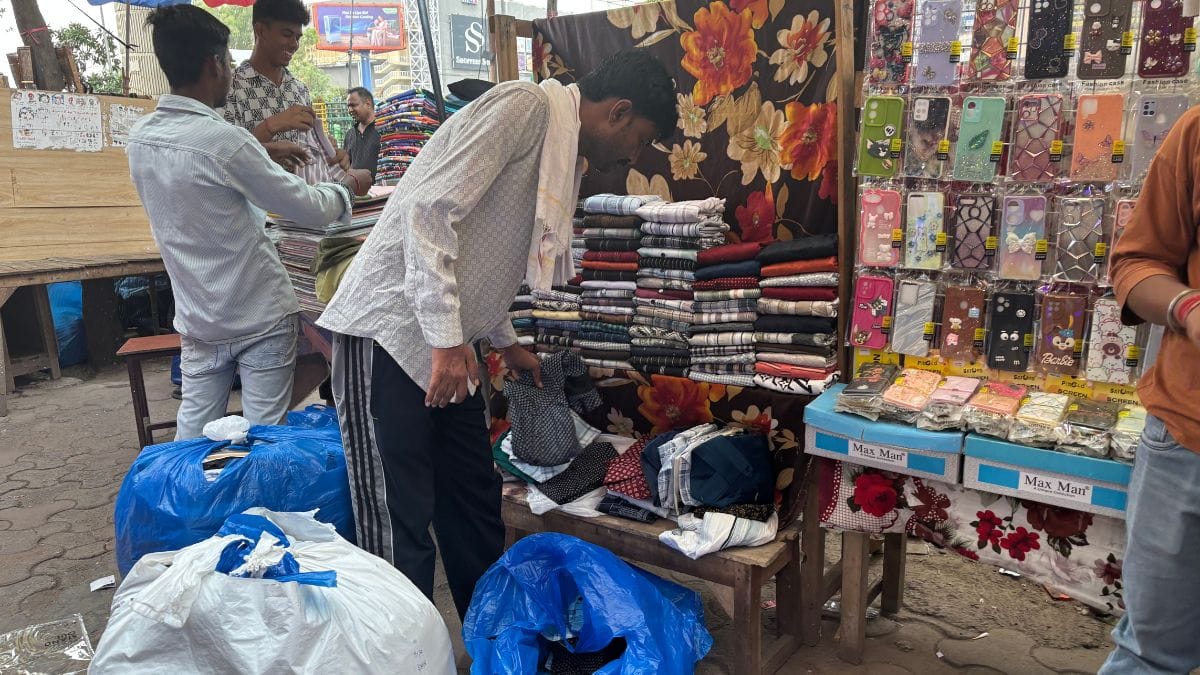
Deepak Kumar, 41, has been running a mobile repair and cover shop in Atta market since 2000. At that time, the rent of his 6 by 9 square feet shop was Rs 6,000. Today, he claims to be paying a monthly rent of Rs 120,000.
“We do manage to earn but can’t save. Everything goes in the rent. Whatever we eat, and wear is our earnings,” he said.
According to Kumar, makeshift shop owners face everyone’s wrath.
“The Gujjar landlords take more rent from us because we drive sales. And the police also are after our shops,” Kumar said. “The government should allot us an area or a space where we can do our business. We give Rs 1 lakh here, we can give Rs 50,000 to the government.”
Jitendra Chowdhary, a Gujjar landlord who owns approximately 100–150 residential and commercial units in the Atta Market area, is well aware of the reputation landlords carry in the locality. However, he dismissed the notion of a “landlord terror,” calling it “largely false.”
“This rent is our only source of income—we have no other livelihood,” said Chowdhary, a third-generation resident of Atta.
“But if shopkeepers are unable to pay rent regularly while continuing to use our spaces, we’re left with no choice but to take action.” Non-payment of rent means shops owners are forcefully removed.
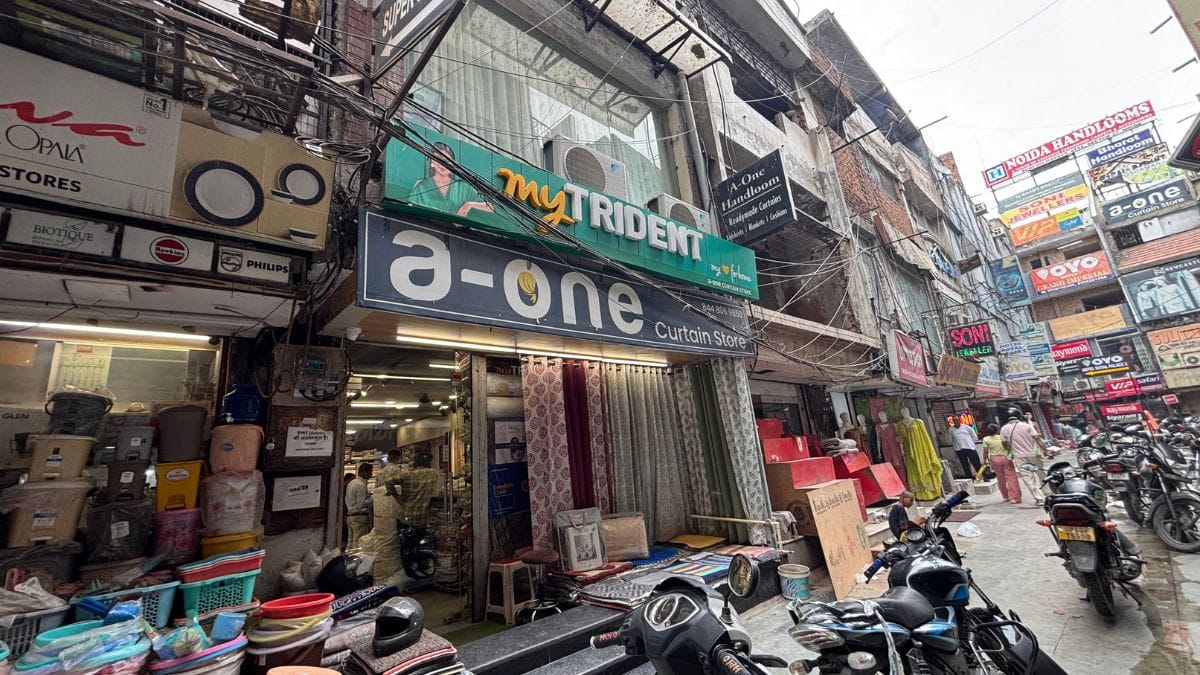
He also refuted claims that landlords collect money from makeshift stall owners. It’s the word of shopkeepers against the landlords. Both have a different story to tell.
“Speaking for myself, I don’t charge hawkers anything. Nor do the landlords I know. So I’m not sure who they’re paying rent to,” he added.
Also read: The idea of Noida. The bad boy of NCR, Mall of India swag, a culture vacuum
Traffic chaos
Traffic congestion around Sector 18 metro station is a recurring issue, significantly impacted by the Atta Market, including its hawkers, the food carts and illegal parking.
Notably, there is no parking facility in Atta. The nearest car parking is in Sector 18 Pocket A across the road. And the metro station adds to the peak hour chaos.
“It’s absolute chaos from 5 to 9 PM,” said Dubey, who was deployed here six months ago.
Even after removing hawkers, people park their vehicles along the moving lanes, and food stalls draw huge crowds, adding to the mess.
“A flyover could resolve all the traffic problems here,” he added.
E-rickshaws and autos also contribute to the bottleneck by haphazardly parking and picking up passengers near the metro station and within the market area.
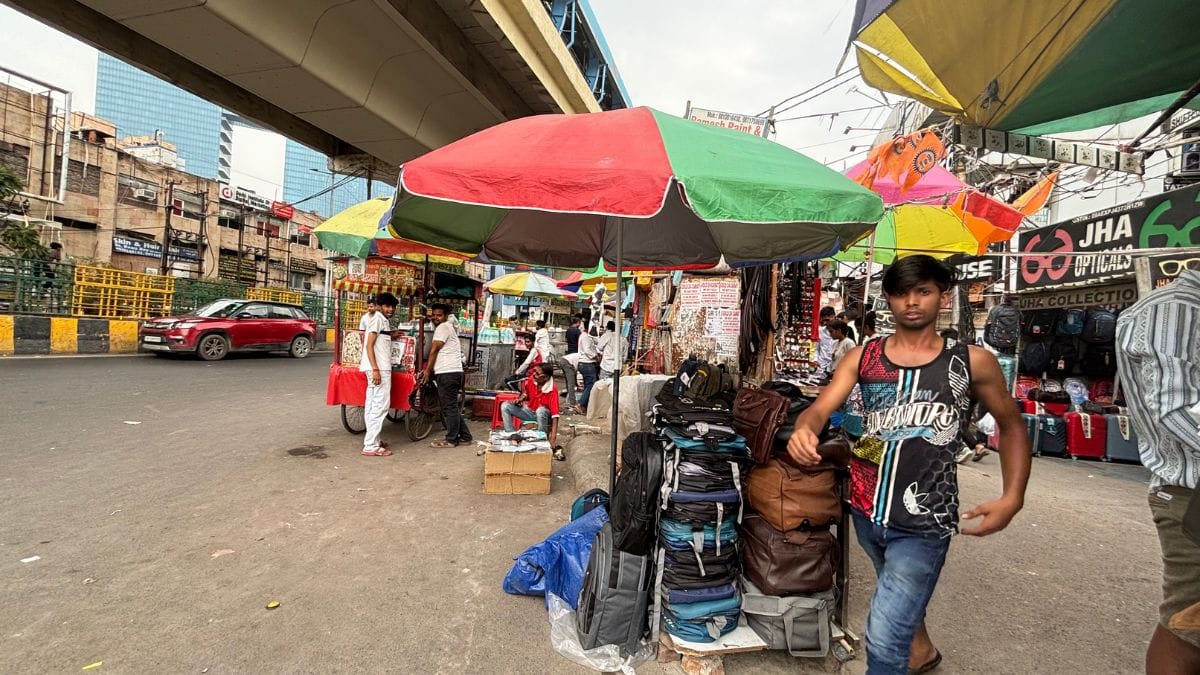
The chinks in Noida’s urban planning have been pockets like Atta where the residential and the commercial co-exist. That’s a perfect recipe for congestion and traffic.
Chaos in Atta Market stems entirely from a lack of planning, said Azim Khan, who has overseen development and planning for the Sector 18 Market Association. He also claimed to have been involved with Noida authority since 1999 when a blueprint for the market was put together.
Khan, 55, said after all it was the authorities who provided the blueprints, guidelines, and construction norms for these marketplaces. But Atta, he pointed out, is different. It belongs to the residents of Atta village.
“There’s no structured system there— no rules or regulations,” Khan said.
Many shopkeepers said because the area is Gujjar dominated, the authorities don’t interfere.
The surge in mall footfall around Noida’s Sector 18 and Sector 38 —that is home to Centre Stage Mall, The Great India Place, and DLF Mall of India — has also had a direct spillover effect on the traffic situation near Atta Market.
Last year in October, during the festive season, the traffic police carried out an anti-encroachment drive in the 250-metre stretch between Atta market and Atta Peer to streamline traffic.
“Police are deployed in that area permanently,” said Dharam Prakash Shukla, SHO, Noida Sector.
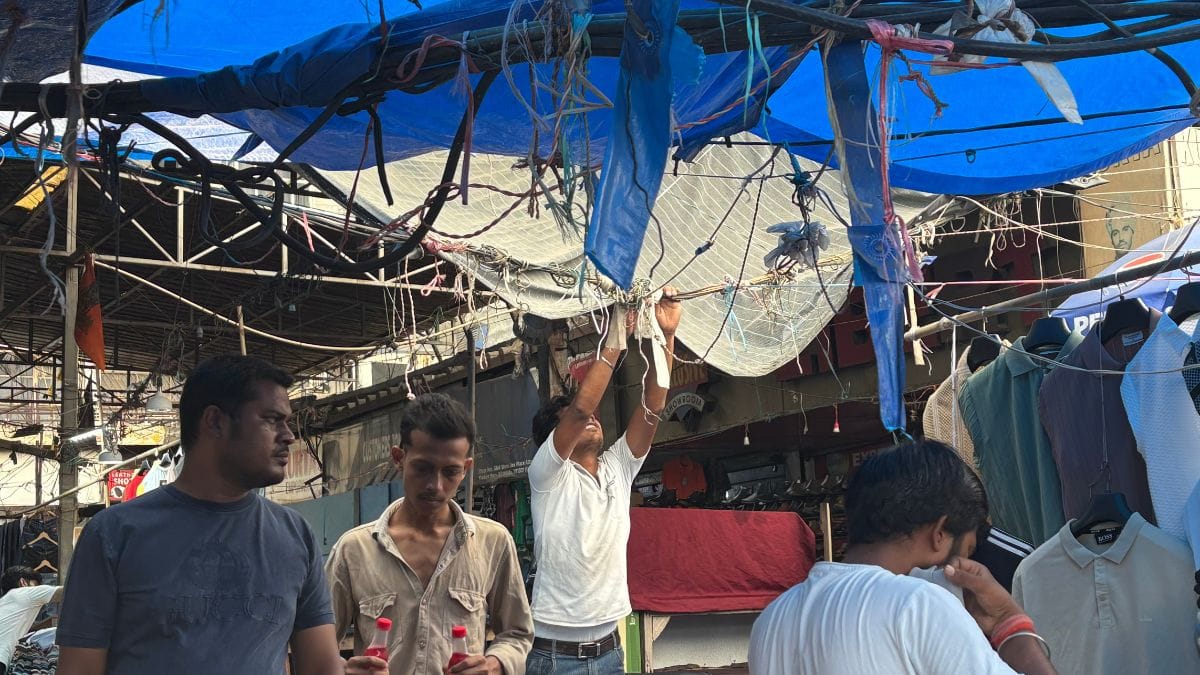
According to Shukla, majority traffic in the area is due to the metro, and not just the makeshift stalls. He said multiple letters have been written to the Noida Authority, asking for removal/relocation of makeshift stalls via the police but no action has been taken till date.
“This indicates that they have some backing. Multiple people, authorities are involved,” Shukla said.
However, makeshift shop owners express their helplessness.
“Where should we go,” asked Mukesh Shah, 42, who has been running a makeshift stall selling shirts and denim for the last 15 years.
Also read: At 50, Noida doesn’t know what it wants to be—cosmopolitan city or industrial utopia
A fire prone area
The Delhi Metro’s blue line that runs above Lieutenant Vijayant Thapar Marg and Sector 18 Metro station divide two Noidas. On one side is the old busy Atta Market and on the other are malls and branded outlets that came up with the arrival of the Metro. It’s these malls and outlets that took away the fortunes of the Atta Market shop owners and left a steady stream of traffic.
The VIP customers of Atta market now prefer the less chaotic and air-conditioned malls, that offer better parking and a curated shopping experience—something Atta’s chaotic streets couldn’t match.
Yet the market remained alive, stubbornly refusing to surrender to time.
But its age showed—not just in its fading walls or rusted shutters, but in the tangled and unprotected web of electrical wires, twisted around poles and dangled overhead.
It now has become a zone prone to fire accidents.
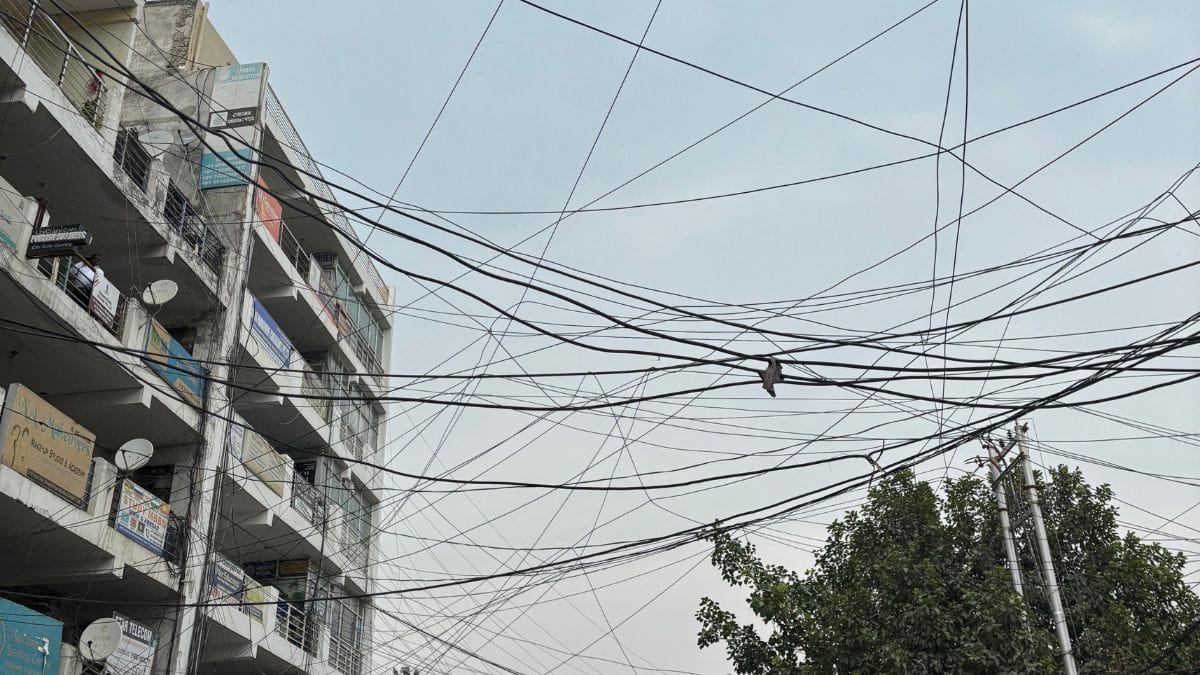
Earlier this year, a fire broke at the Krishna Apra Plaza, in sector 18, after an air-conditioner exploded at a real estate office on the first floor. Fortunately, no lives were lost. But, it did scare the shopkeepers.
“I can’t stop working because of the fear. Have kids at home,” said Hassan.
Last year in May, the Noida fire department conducted an awareness drive at Atta Market urging the landlords and shopkeepers to repair panels to prevent electrical short-circuits. They also briefed the shopkeepers about preventive measures to be taken in case a fire broke out.
Chowdhary agreed to the risk the market is exposed to.
“We hear about short circuits, especially during summers, during excessive load… that risk lingers on but what can we do?” he asked.
He said that the attempt to put these wires underground turned out to be a failure because the water pipes would burst.
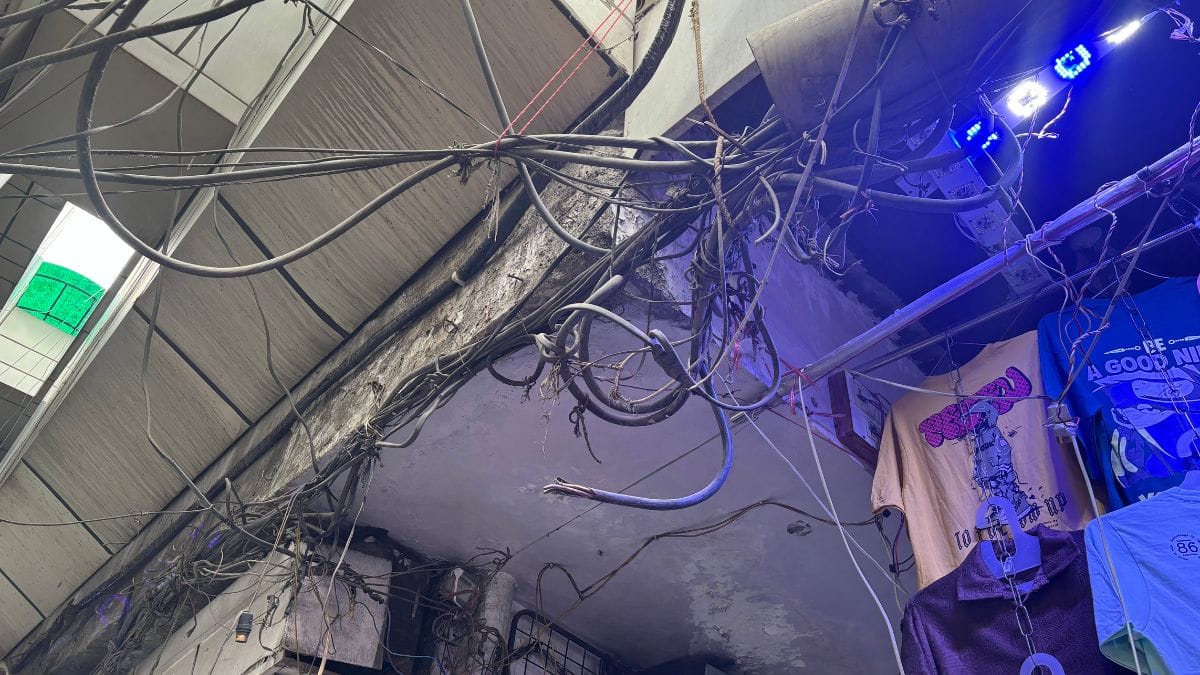
Chowdhary said that he has written to NPCL (Noida Power Company Limited) multiple times asking to fix the open electrical wirings and make the wiring system underground only to get a template response — “we will look into the matter.”
This article is part of a series called ‘Noida@50’. Read all articles here.
(Edited by Anurag Chaubey)






